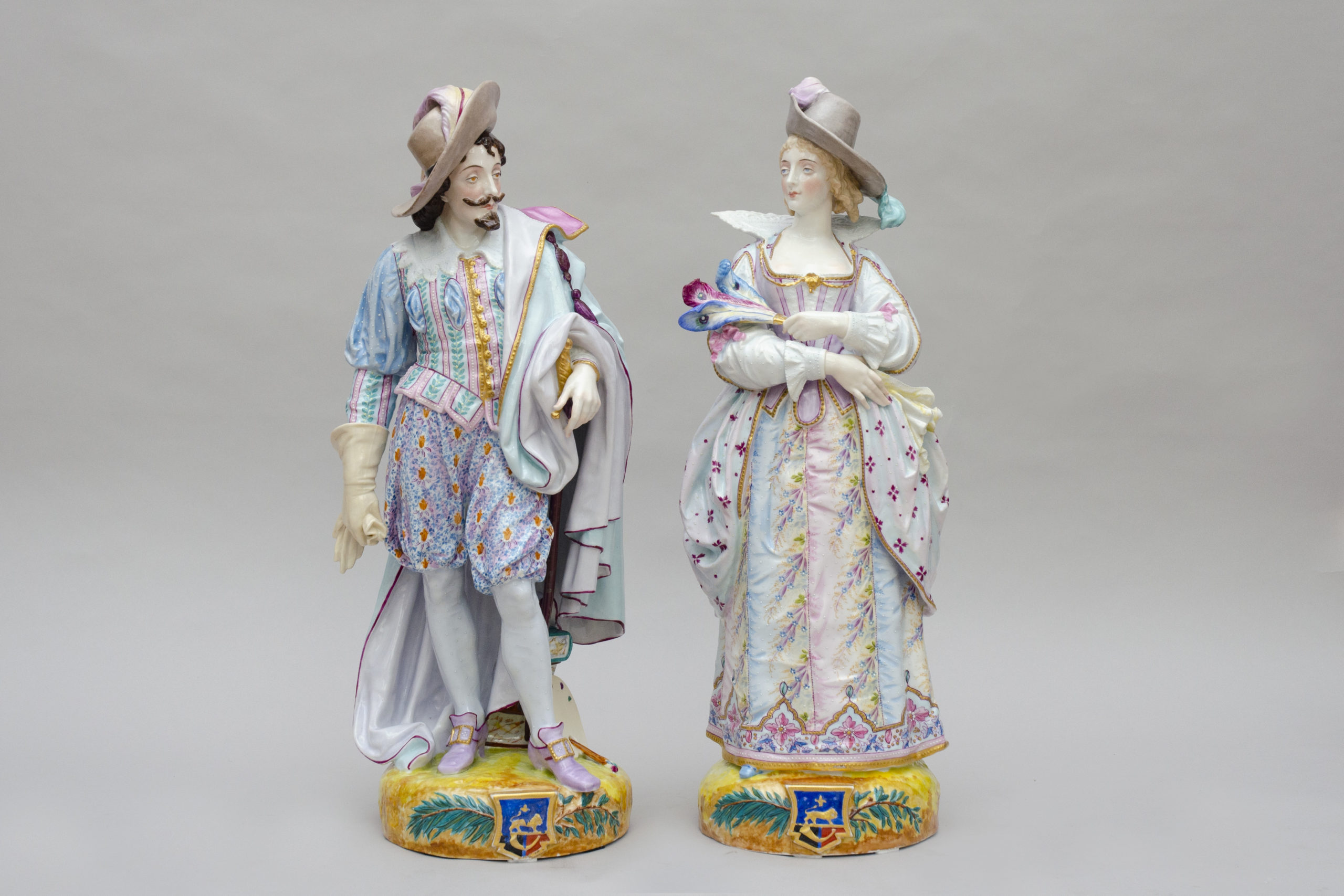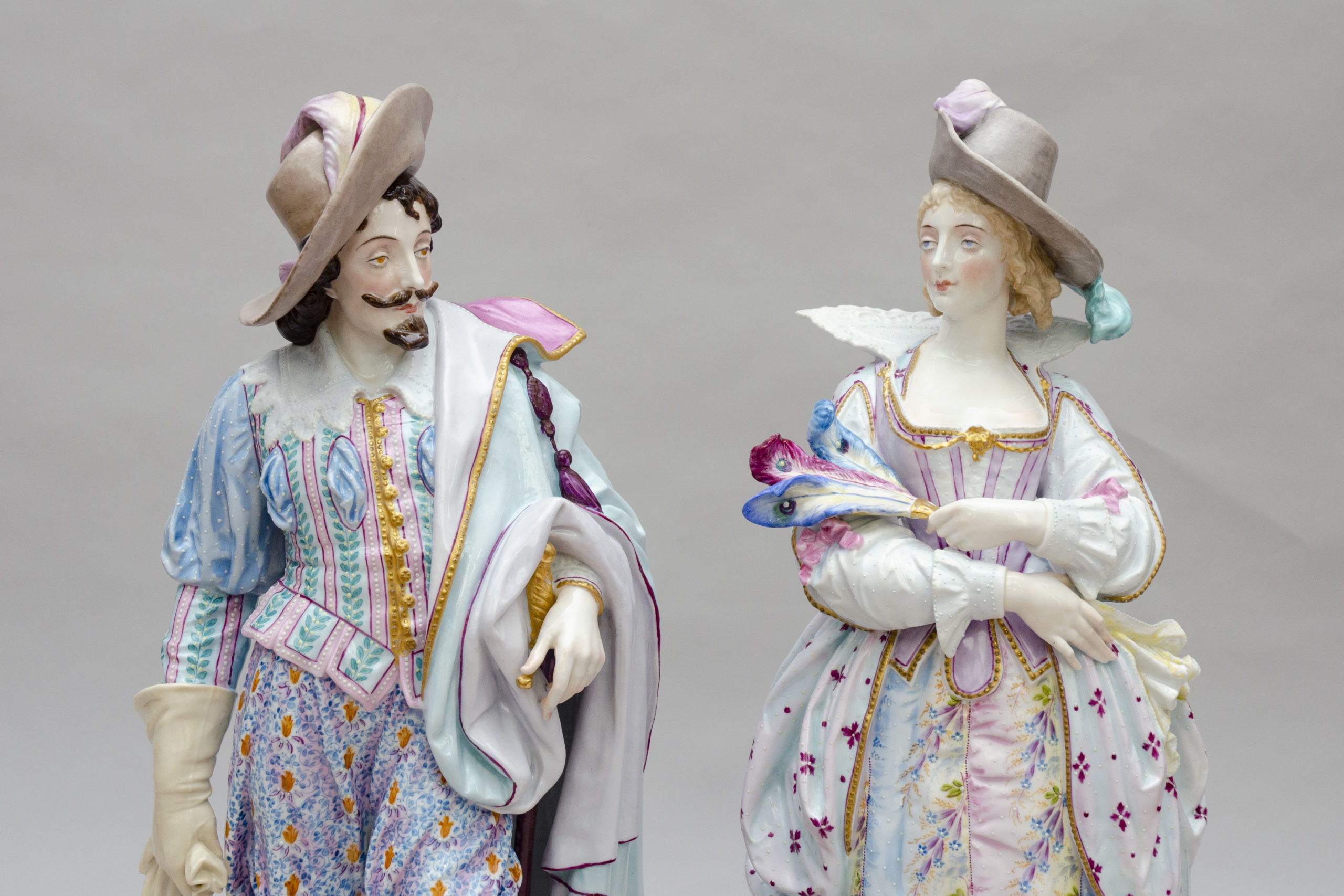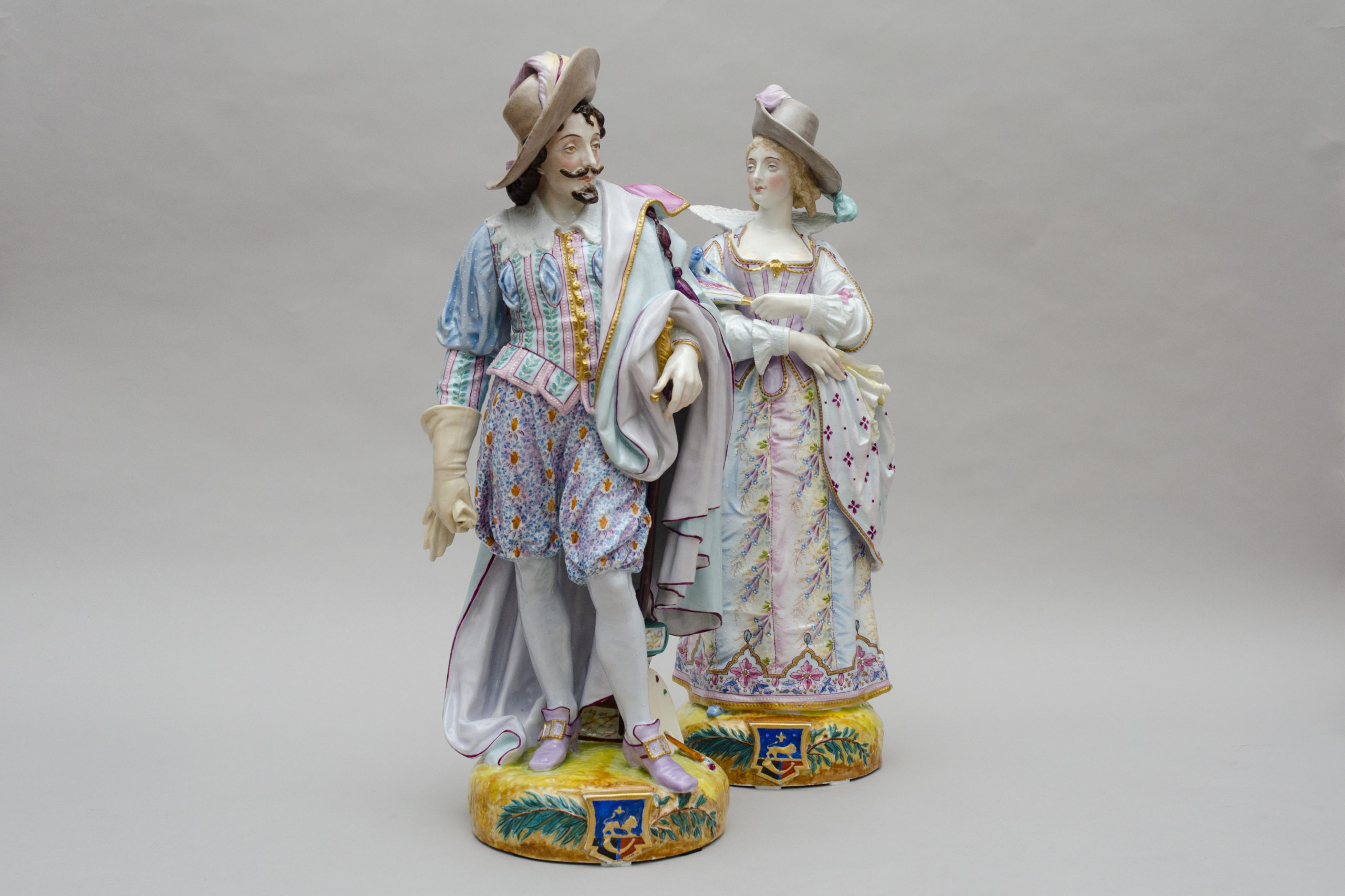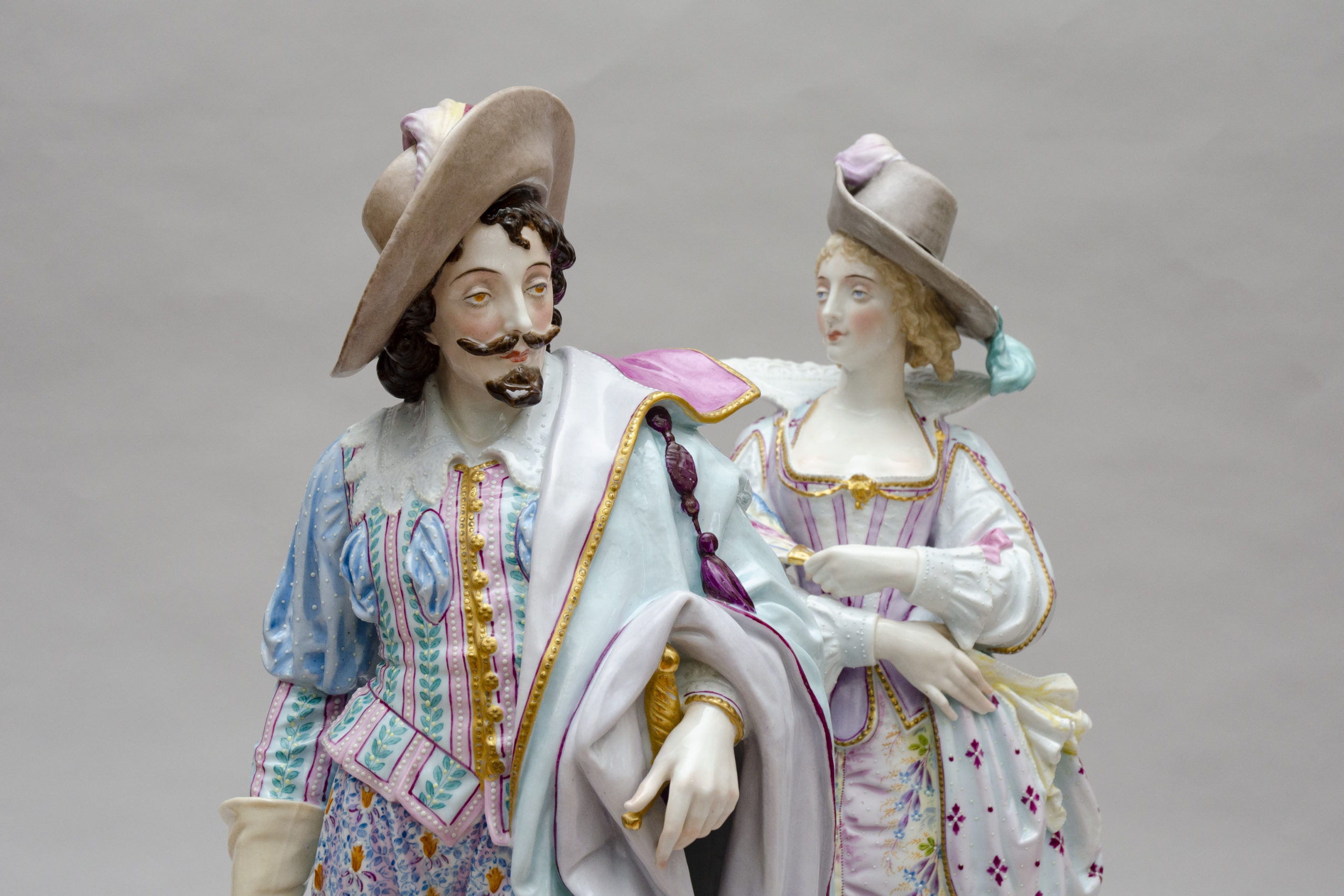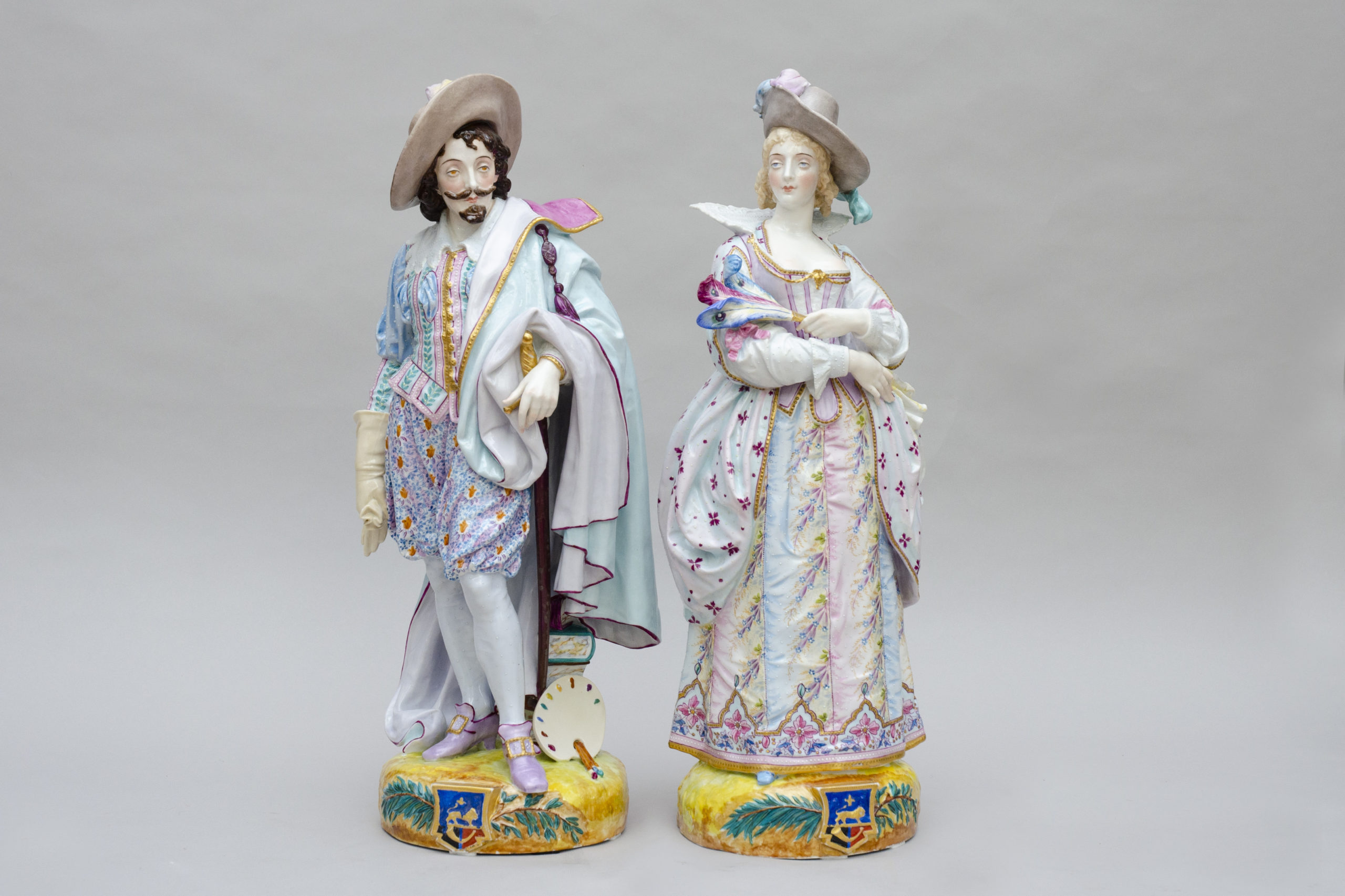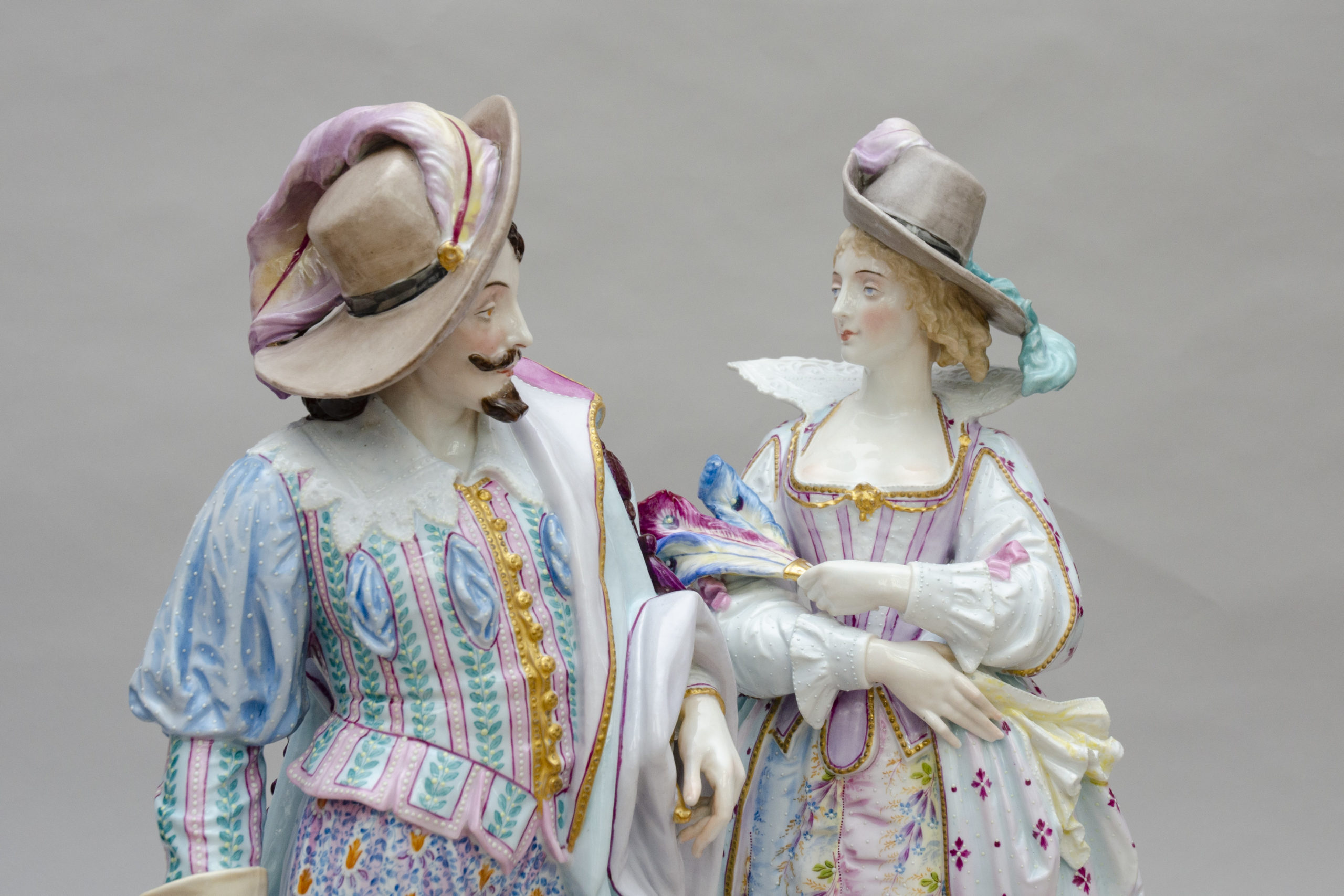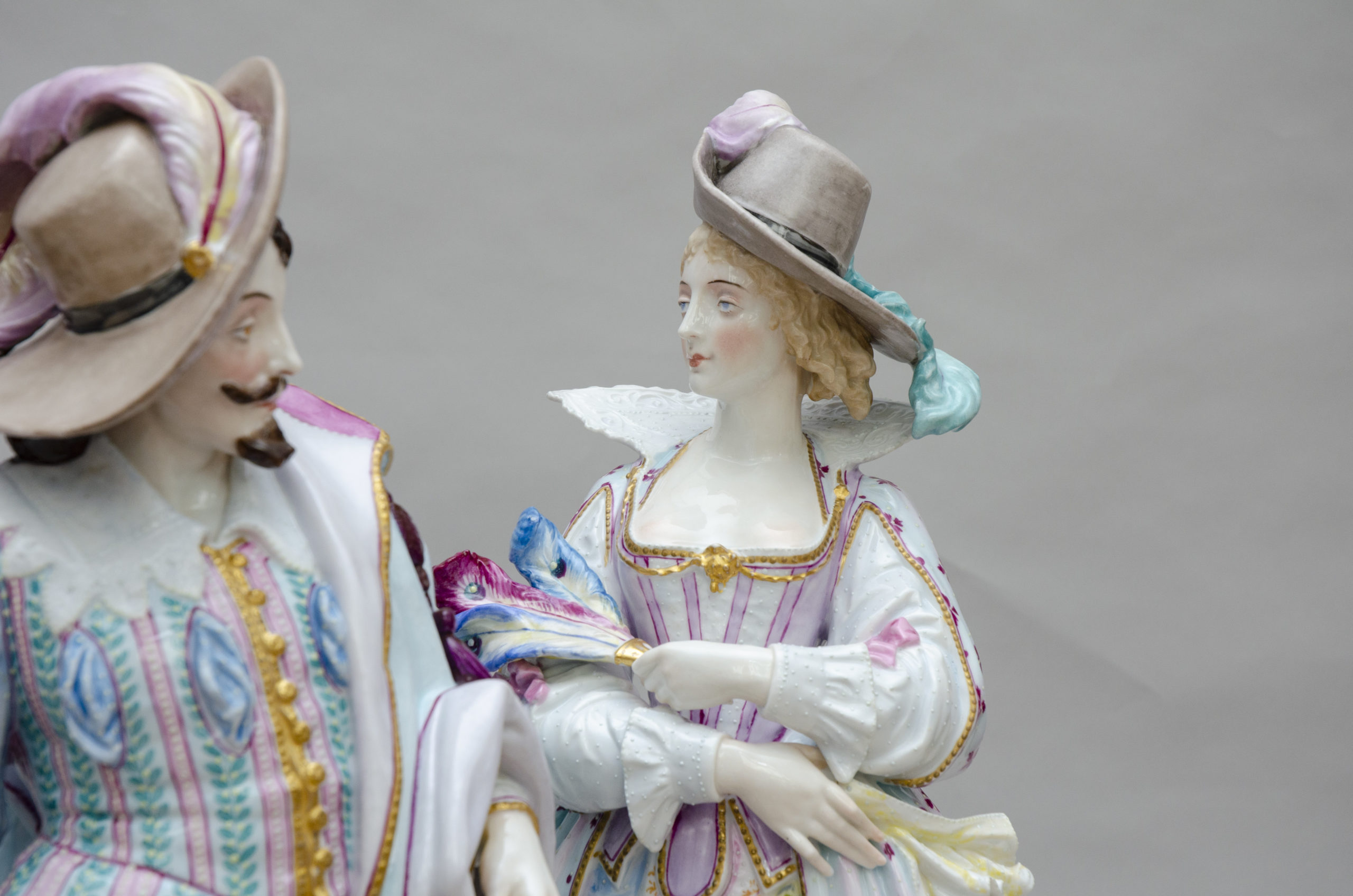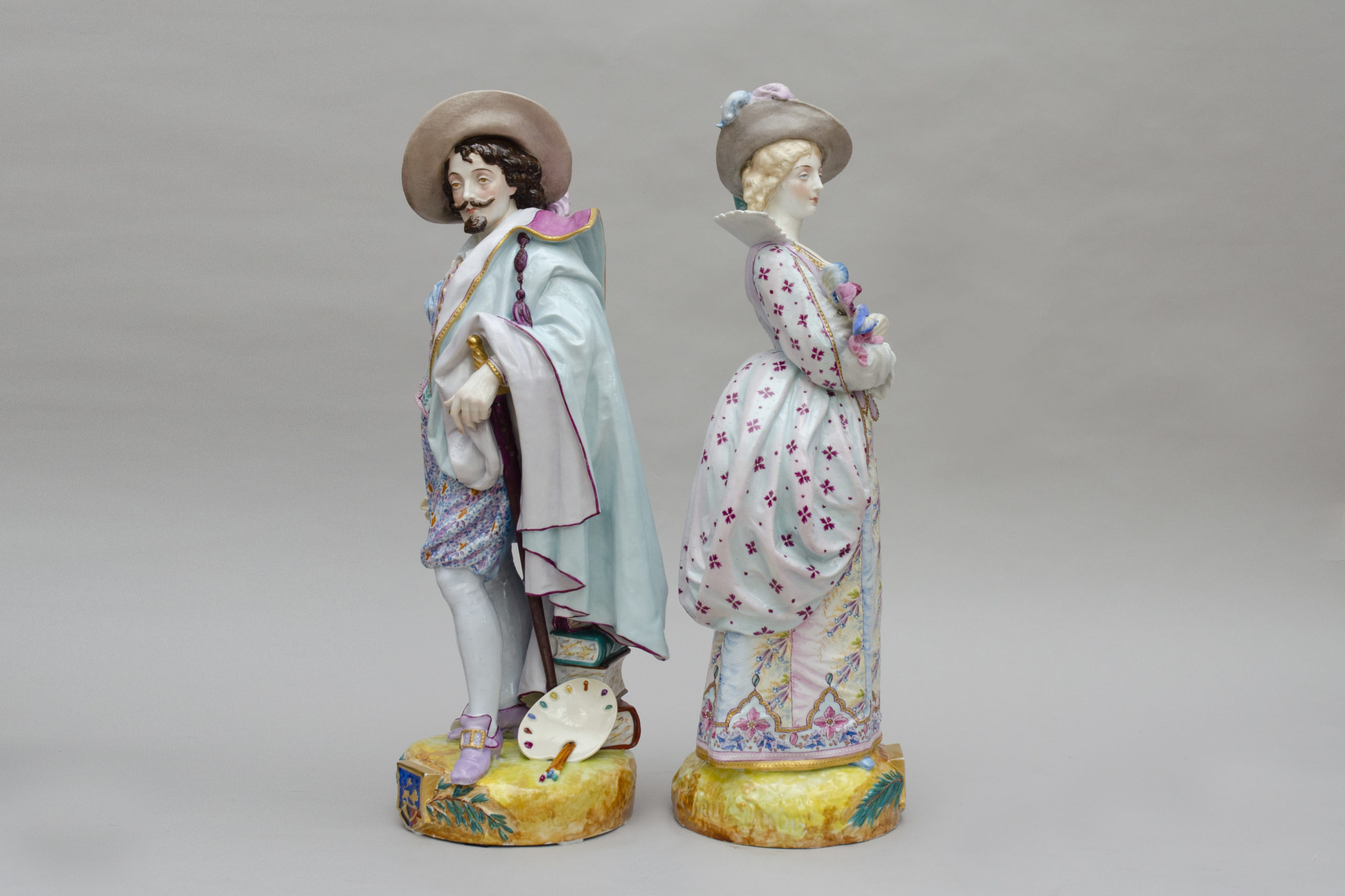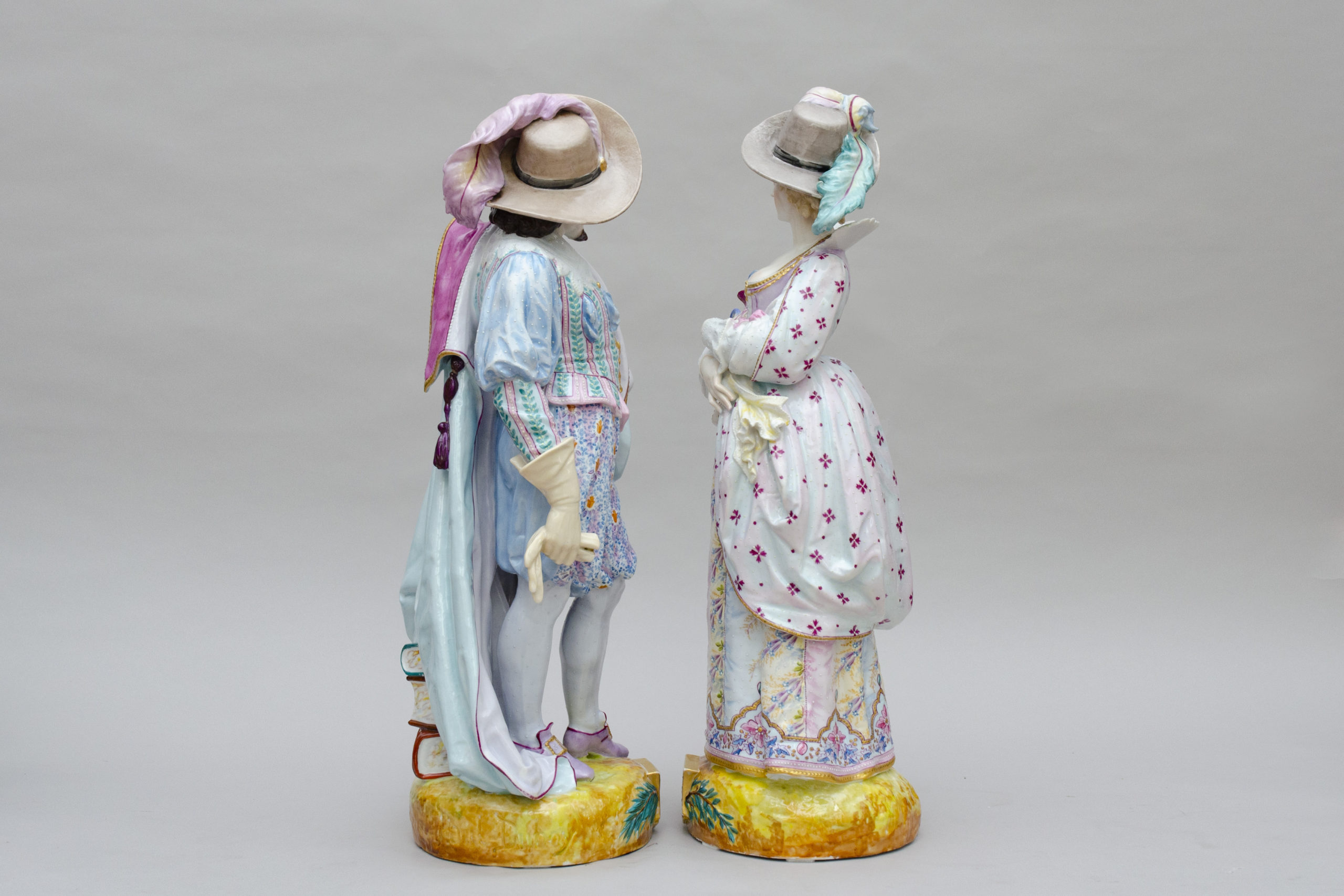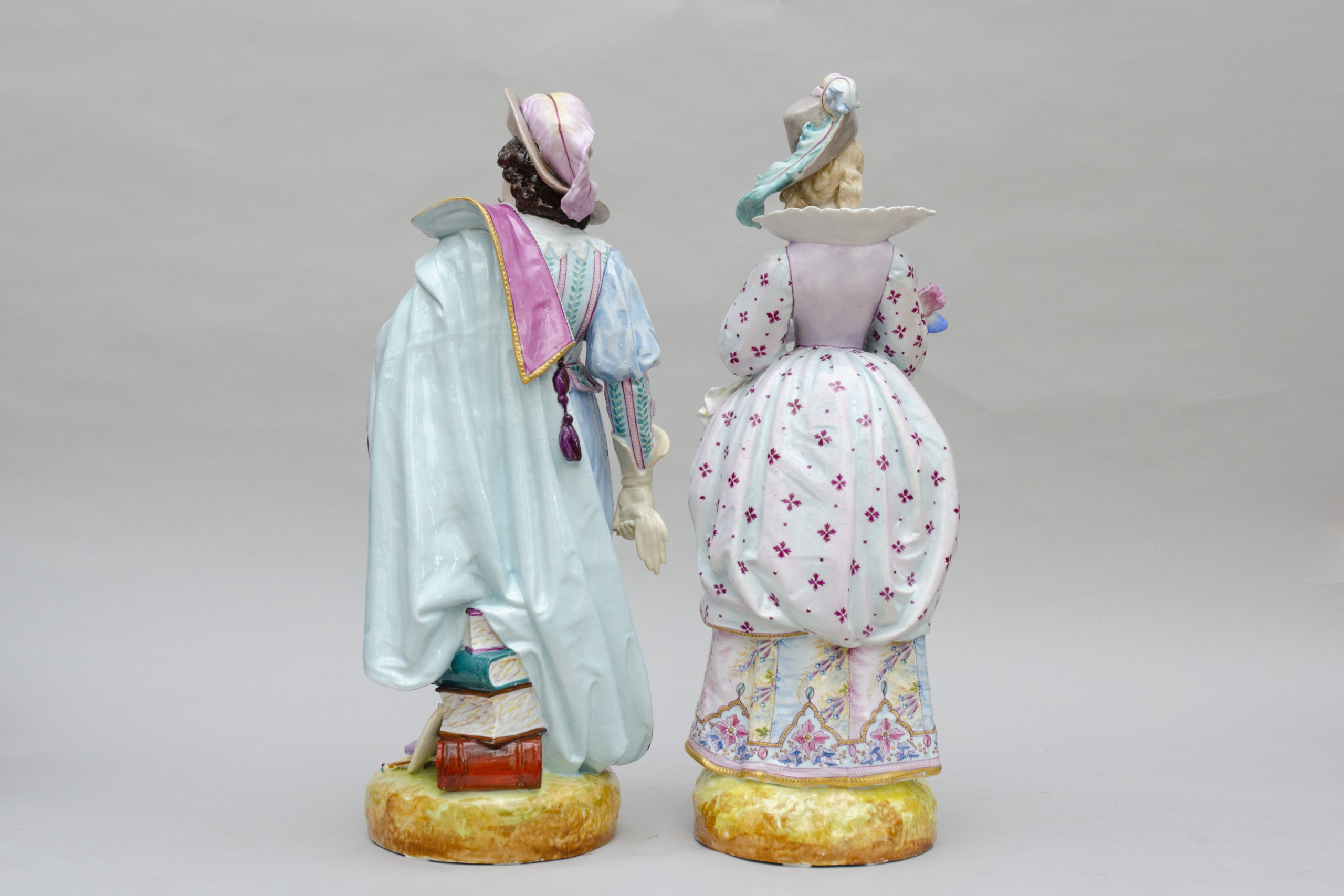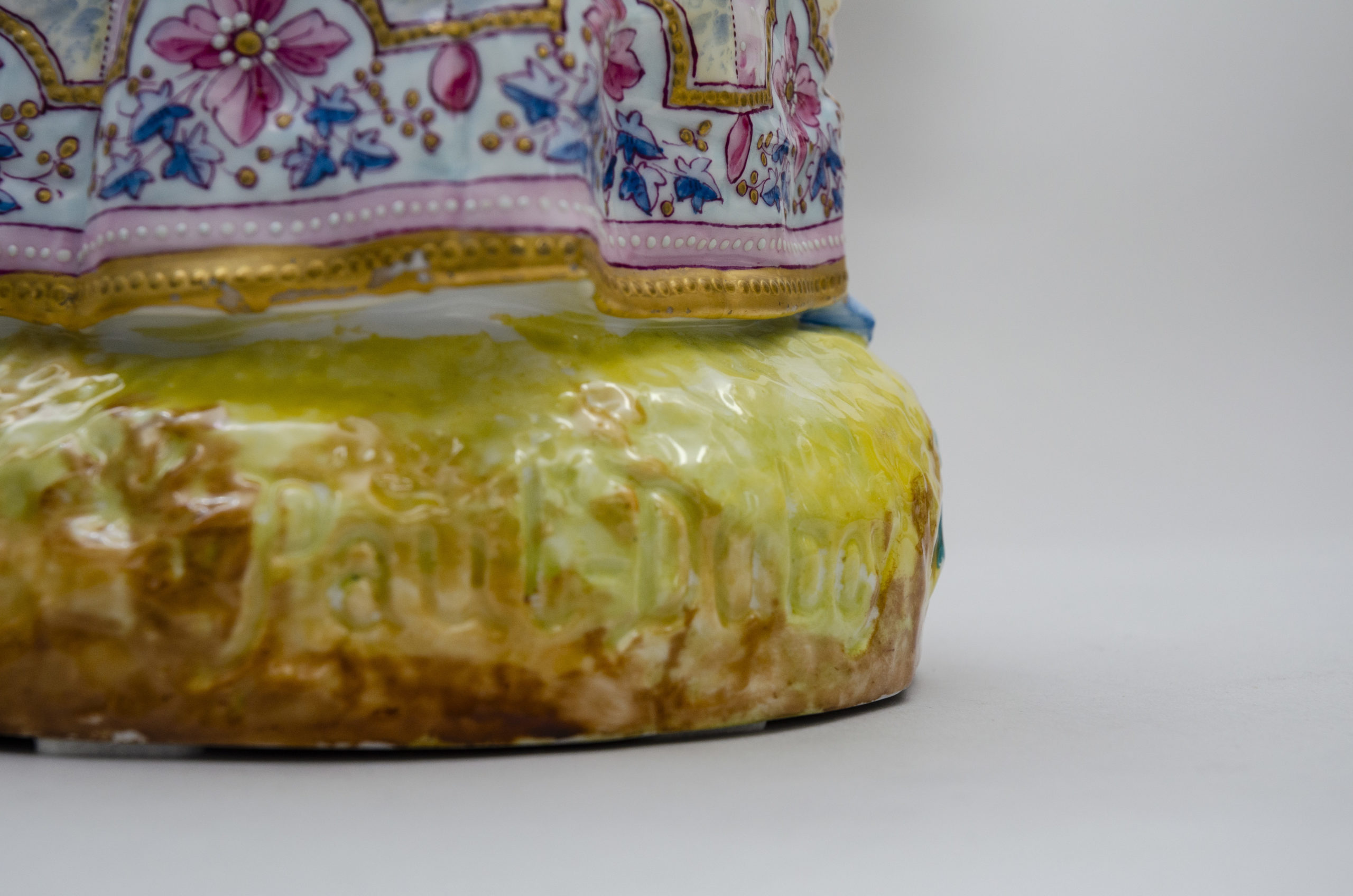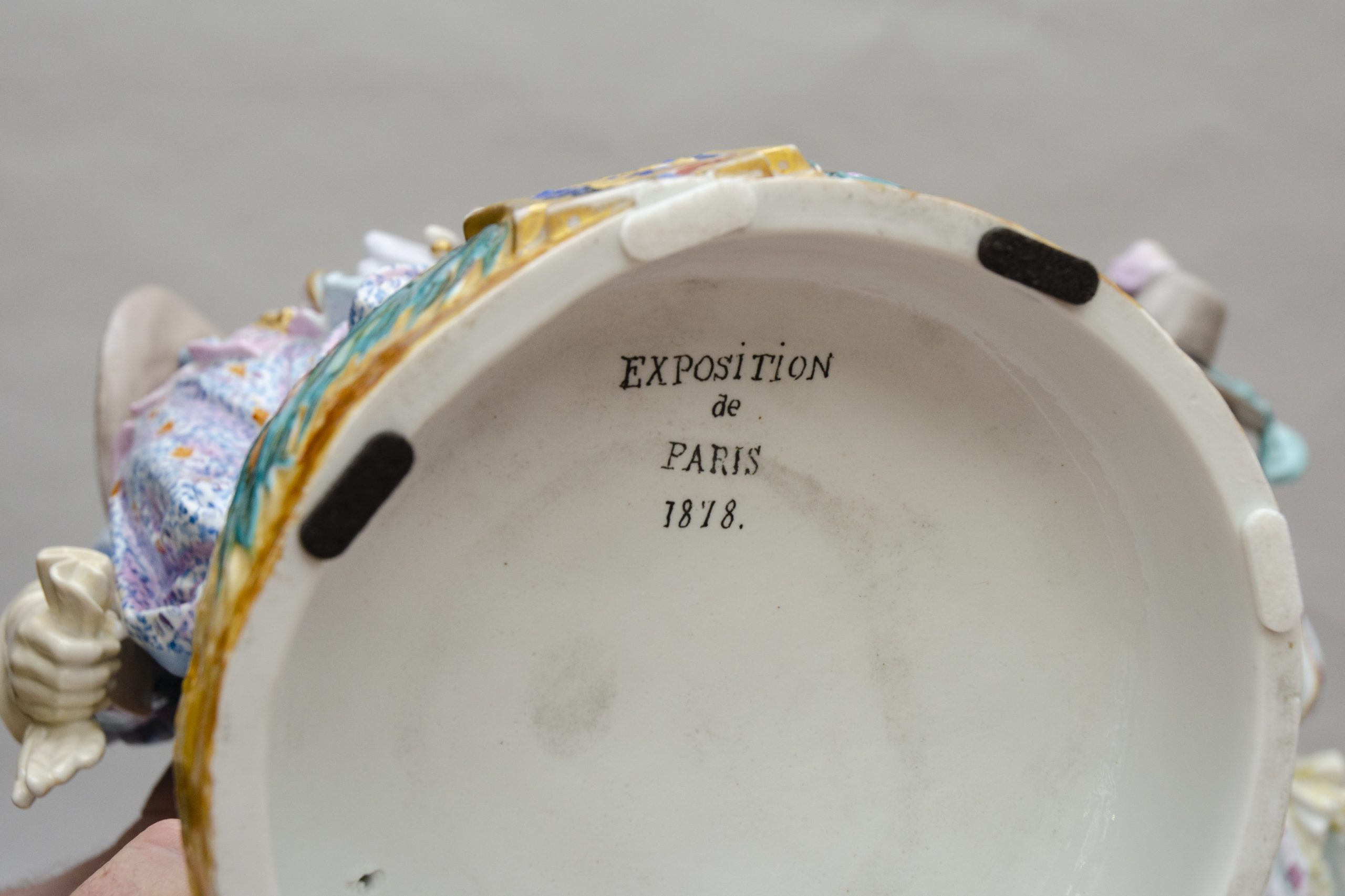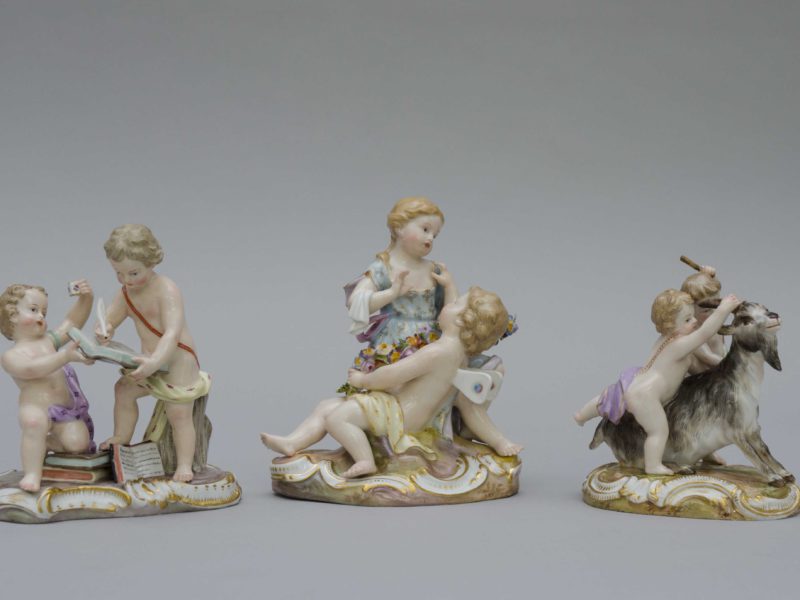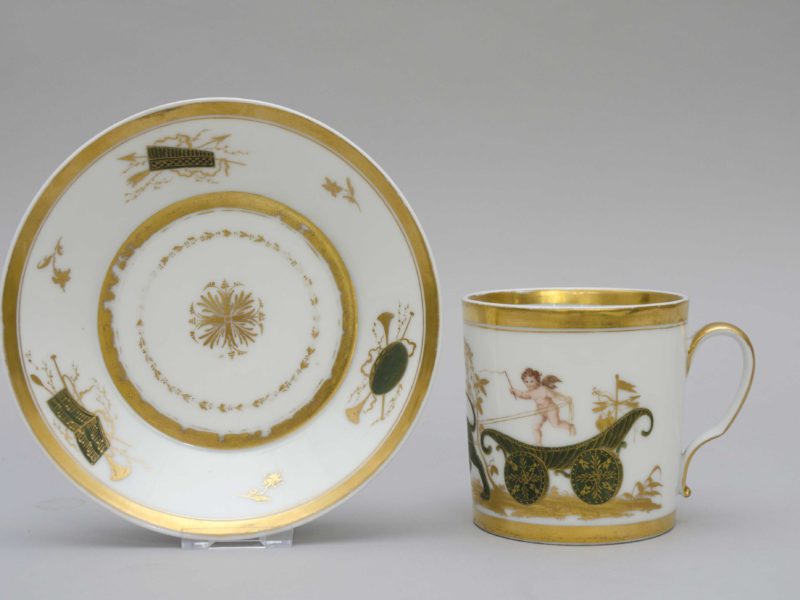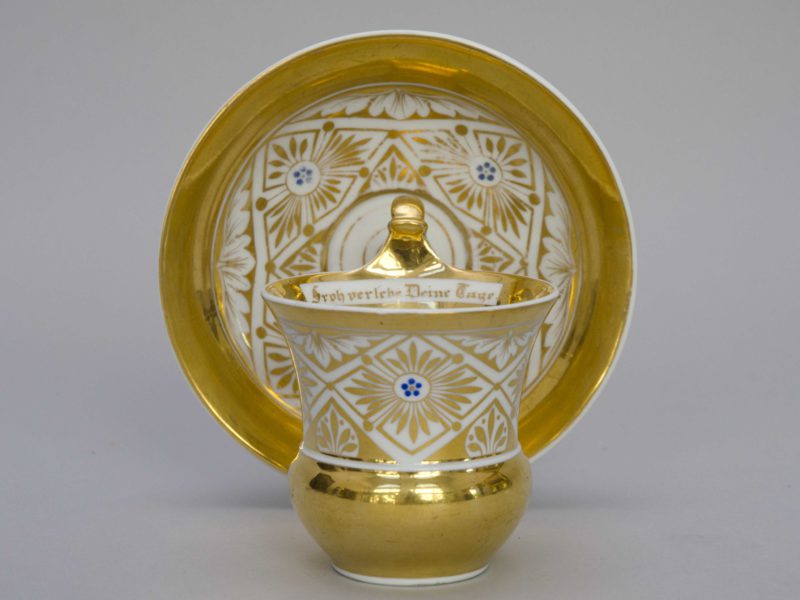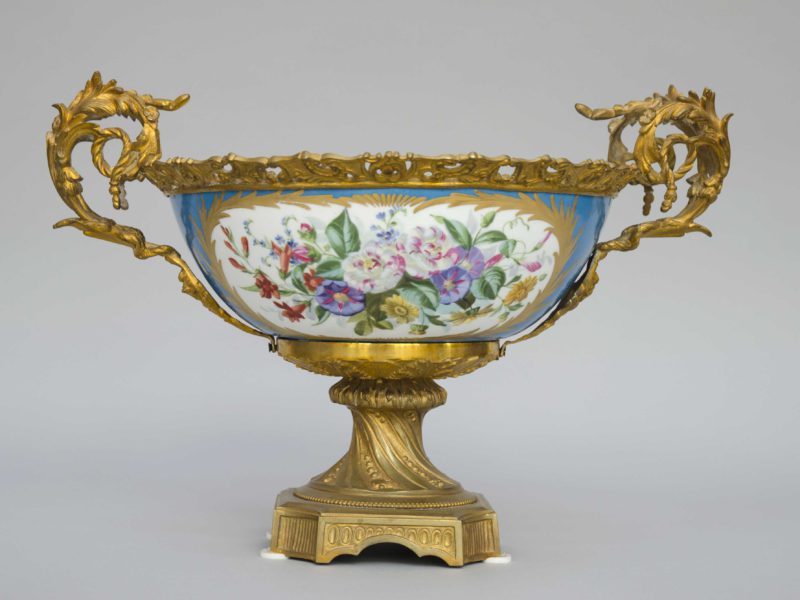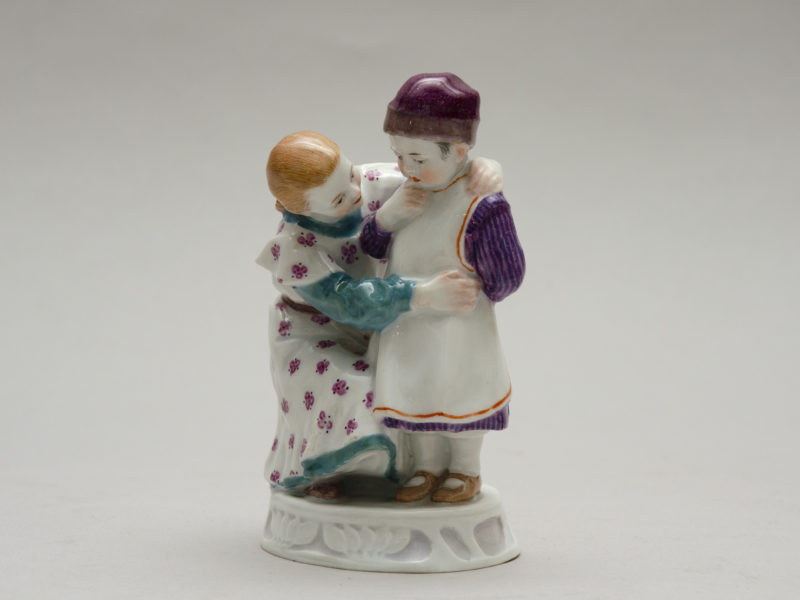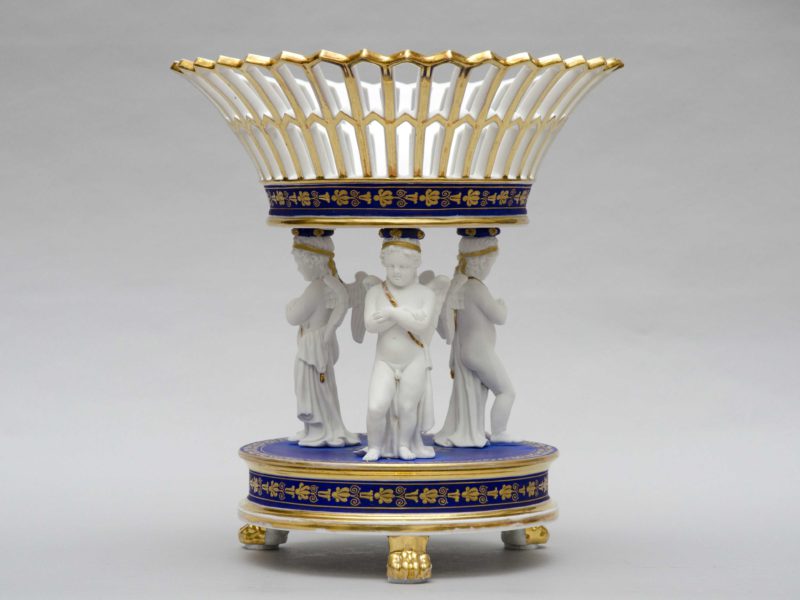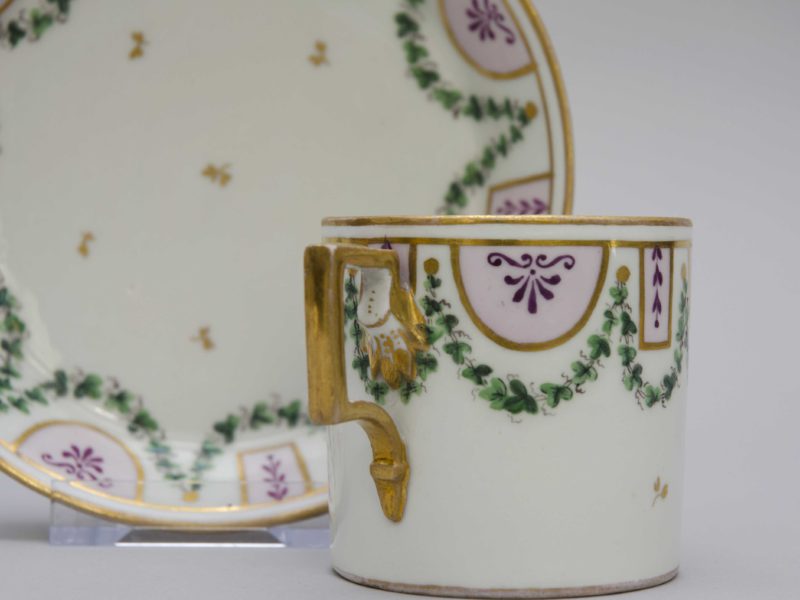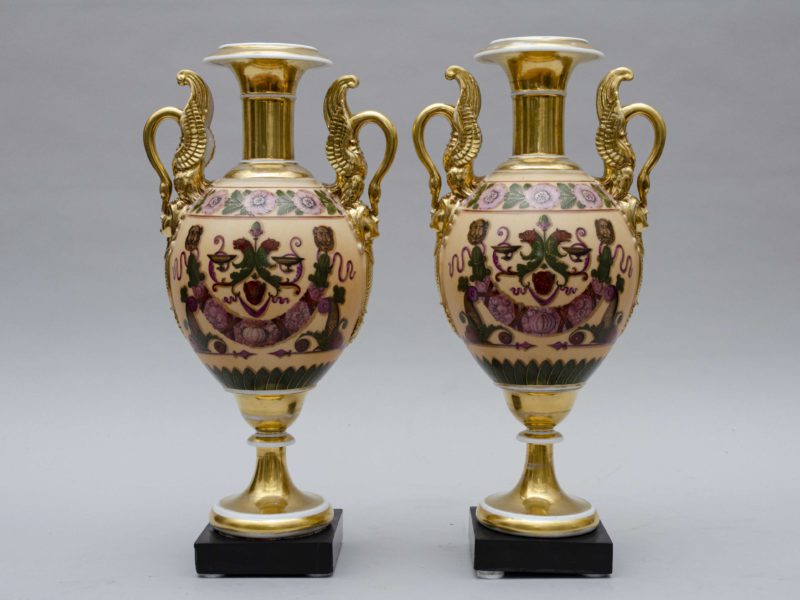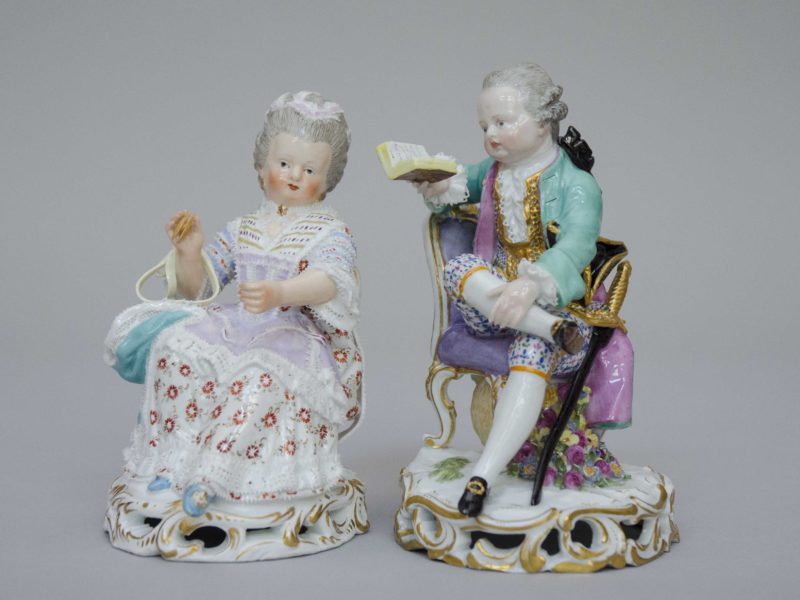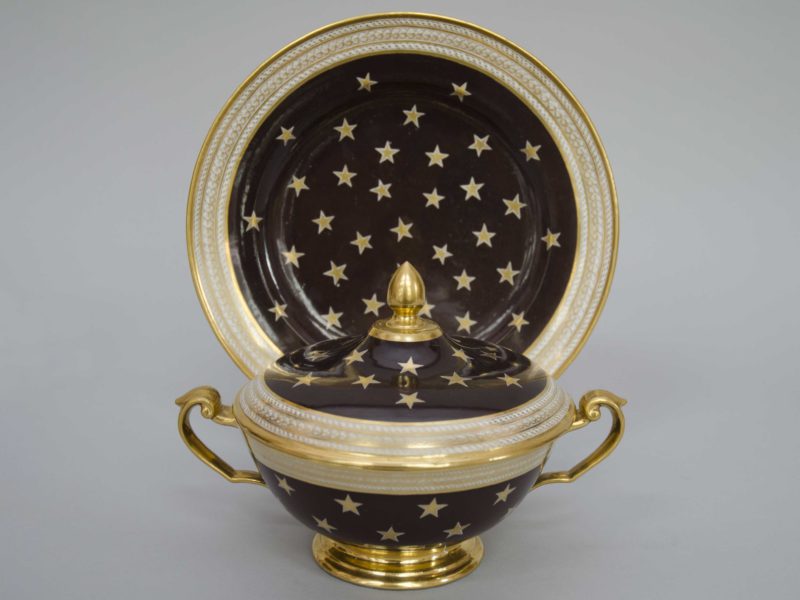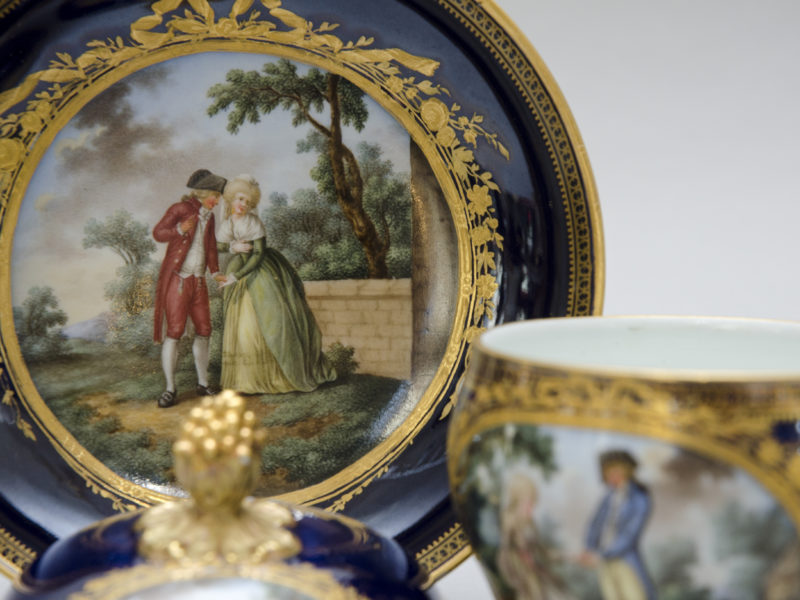
“Rubens and wife Hélène Fourment”, Ardant in Limoges
2.900€
In stock
Pair of large historical figures of the Flemish master Pieter Paul Rubens and his second wife and muse Hélène Fourment. The two figures are very elegantly dressed, and Rubens is shown with his painter’s palette and books, representing encyclopaedical knowledge. Signed in intaglio for the French sculptor Paul Duboy. Marked under the base ‘Exposition de Paris 1878’. This means that this pair was exhibited in Paris that year. Attributed to the manufacture of Henri Ardant in Limoges.
Size: H 55 cm – diameter of bases 19 cm
Limoges, circa 1878.
Lit: Paul Duboy (1830-1887), from Tours, exhibited at the “Salon des artistes français” between 1835 and 1882. He sculpted several models for Henri Ardant’s factory in the years 1860-1870, including ‘Le Jardinier et la jardinière’ produced in white biscuit and in painted and enamelled versions.
Lit: Henri Ardant, born into a Limousin family in 1828, joined forces with the famous turner Auguste Poncet in 1854 and together they took over the factory known as the ‘Comte d’Artois’ from Mr. Brisset. With Poncet, described as ‘the most skilful turner in the province’, he presented a pair of ‘remarkable’ vases at the 1855 Universal Exhibition. He developed artistic porcelain, particularly biscuit. When Poncet retired in 1858, Ardant continued alone. He had close ties with Adrien Dubouché and was introduced to the Parisian artistic scene. He made a major contribution to the development of relations between porcelain manufacturers and artists, not hesitating to call on well-known Parisian sculptors such as Albert Carrier-Belleuse, Henri Plé and Auguste Arnaud. The manufactory once again distinguished itself at the 1867 exhibition with unrivalled objects, such as a porcelain ewer known as ‘Benvenuto Cellini’ modelled by Siméon Baylac. In 1873 Ardant went into partnership with porcelain manufacturer Alexis Bourdeau, then with Raymond Laporte (his son-in-law) in 1879. Laporte succeeded his father-in-law on his death in 1883 and the factory took his name.
In stock
